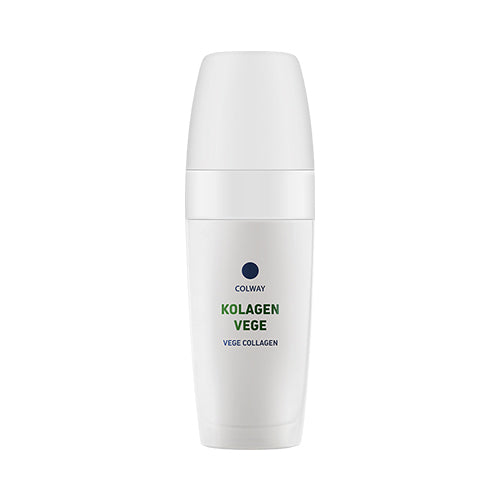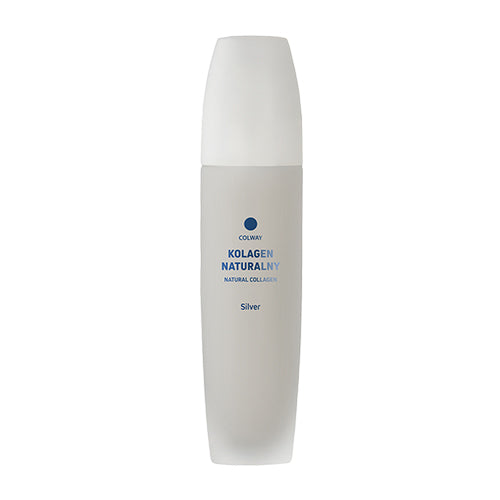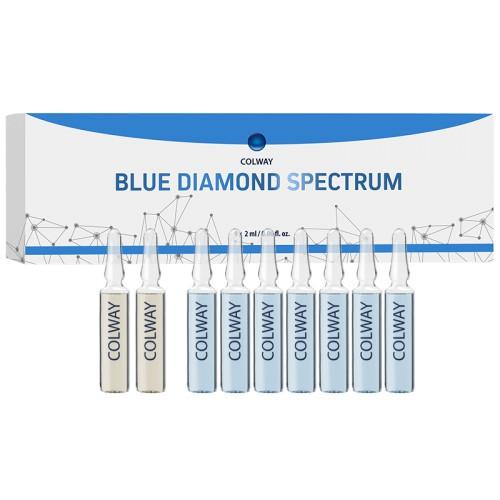Top 3 Collagen Treatments Proven To Reduce Wrinkles and Sagging Skin
Before you consider Collagen Injections, Red LED Light therapy, or Collagen Supplements to transform your skin, read this on the Pros and Cons, and finally, which is the best.
Which Treatment is the Most Suitable for You?
When we’re children, we’re blessed with plush, bouncy skin without a single worry about wrinkles or fine lines; then, as we grow to become more aware of our appearance, we actively begin losing collagen—the protein in your skin that gives it its smoothness, firmness, and structure. It’s no wonder why the beauty industry has invested major bucks in finding new ways to replenish lost collagen and turn back the clock a few notches.
The good news? Some of these collagen treatments wrinkles and sagging skin are legitimate and backed by science (and of course, anecdotal evidence). Here, I explore three wildly popular options for you to compare:
LED Red Light Therapy To Stimulate Collagen
Here’s a fun history fact: in the 90s, NASA (yes, astronauts!) observed that plants were growing faster and fuller under certain wavelengths of light. They began experimenting this same effect on skin in hopes of discovering a safe, non-invasive way to help accelerate wound healings in zero-gravity environments (where injuries mend more slowly). They learned that red and infrared light therapy helps speed up the growth of skin cells by up to a whopping 200%. It was after this finding when experts and researchers began looking into LED therapy for other dermatological conditions, such as wrinkles and sagging skin.
LED (Light-Emitting Diode) skin therapy, also referred to as phototherapy, works on this premise: different colors of light penetrate your skin with different levels of depth and prompt various biological reactions. Red light, which infiltrates skin deeply enough to reach fibroblasts (the special cells responsible for collagen and elastin), helps both stimulate the production of youth-giving proteins and reduce inflammation. In fact, red light can get through up to ten millimeters of skin. Amber light, which penetrates less deeply, was also found to help build collagen and elastin. The deepest wavelength of light is infrared, known to help fast-track healing, alleviate inflammation and even help skin care products absorb more deeply.
- As you can tell, it works. If you want more physical collagen in your skin—not just the appearance of better-looking skin—LED red light therapy is a solid option.
- LED red light therapy is painless and there’s zero downtime—that means you don’t need to walk around for days with reddened skin or flaking.
The Downsides
- You can get LED light therapy for collagen production through a professional (for a stronger treatment) or by purchasing an at-home device. However, professional treatments can cost anywhere between $50 to upwards of $100 per session—and you need to be consistent for at least eight weeks to see results. At-home devices are also expensive, ranging from $200 to $1500.
- Many at-home devices are ineffective because they lack the power, are poorly built or don’t offer the light intensity or safety required for visible safe results. Shop smart!
- If you’re using an at-home device, you normally have to start using it five days a week for up to 30 minutes per session, which takes a lot of dedication and time.
Collagen Injection Therapy and Dermal Fillers
Simply put, collagen injections physically insert a substance into the skin to “replace” the collagen. By doing so, the skin appears as if there is support and structure—as if you have more collagen than you naturally do.
Popularized in the 80's, Zyderm and Zyplast are two collagen fillers sourced from cows. The bovine collagen is injected into the dermis (the layer underneath the epidermis that contains collagen and elastin).
These days, there are more injectable options for people who prefer not to use animal-based products, the most widespread being dermal fillers. Juvéderm and Restylane are two popular options containing hyaluronic acid, a natural substance found in skin that reinforces skin support and holds up to 1,000 its own weight in water to plump up skin. A study from the University of Michigan showed that the injection of vegan hyaluronic acid also stimulated collagen production.
People get collagen injections and fillers mainly in these areas to plump up lines:
- marionette lines – creases in the corner of the mouth
- nasolabial folds – folds between the nose and mouth
- eleven lines – the vertical lines between eyebrows
- crow’s feet – lines on the outer edges of eyes
- wrinkles on the cheeks and forehead
The Upsides
- The results are immediate, which make fillers a great option for instant gratification.
- Unlike the injected looks of the 90's, a trusted doctor can make your facial improvements look subtle and natural.
- Injections can help with the most stubborn or deep wrinkles.
The Downsides
- There’s no at-home version, so you have to trek to a licensed professional every time you need it—and if you stop going, the results reverse
- Depending on the depth of wrinkles and your goals, to maintain results you have to return after a few months or up to a year
- Because of the immediacy and visibility of the results, you need to conduct substantial research to find a doctor who knows how to not only inject safely but also ensure symmetry and an aesthetically pleasing outcome. If you get a botched job, you can’t take it back!
- Bovine-derived collagen injections might cause allergic reactions, swelling and tenderness in some people
- According to the American Society of Plastic Surgeons, dermal fillers can cost around $600 per syringe—and most people need multiple.
Collagen Supplements To Reduce Fine Lines and Wrinkles
Collagen supplements are everywhere these days—in powder, tablet, and liquid collagen form. The premise is simple: consume collagen (whether it’s sourced from pigs, cows, or fish) and trigger the growth of new collagen in the skin while repairing the damaged collagen. Since we lose one to two percent of our natural collagen every year after age 30, or sometimes even earlier, supplementing with collagen can help minimize that loss—similar to taking calcium for your brittle bones or estrogen after you hit menopause.
Fortunately, there’s a lot of science to back this all up (in fact, there are over 60 published studies!). One study published in the Journal of Cosmetic Dermatology found that regularly taking collagen peptide supplements “significantly increased skin hydration” after eight weeks and "collagen density" after four weeks. Another study reported that after nine weeks of collagen intake, there is a significant reduction in depth in wrinkles and an increase in skin hydration and elasticity.
The challenge with collagen supplements is that just any won’t do. The studies, such as the ones mentioned above, have been conducted on hydrolyzed collagen and taking 10,000mg a day for between 8 - 10 weeks, which means the normally-large collagen molecules have been broken down into smaller-molecule peptides and are at a high enough concentration to produce a visible result. Similar to many vitamins and supplements on shelves, most collagen supplements are simply not absorbed by the body and excreted out. Thus, your skin can’t reap the benefits (in other words, it’s just “expensive urine.”). To take collagen supplements that actually help your skin make more of it, here’s what you should look for:
Ultra-high concentration: Just like you can’t expect to feel hydrated after drinking a tablespoon of water, you can’t expect firmer fuller skin with inconsequential amounts of collagen. You need an extremely high dose of collagen (I’m talking up to 10,000 mg per day) to trigger your body's wound repair response and produce new collagen in the dermis.
Highly absorbable fish collagen: Fish collagen contains 90% Type I and 10% Type III collagen, which are the two main types of collagen in the skin. These two are also the best types of collagen for wrinkles and sagging skin.
Hydrolyzed collagen: When collagen is hydrolyzed, it means that the collagen fibers were broken down into small collagen chains known as collagen peptides, which are easier for your body to absorb when ingested.
Complete amino acid composition: This is related to my above point, but worth underscoring. You’ll notice some collagen supplements are made up of amino acids, but you’ll also notice they typically only contain a few of them—without complete ratios and concentrations. For your body to absorb and transport collagen to the skin’s dermis, you need a complete molecule chain (hence, hydrolysis). Make sure you look for collagen in its complete form.
The Upsides
- Yup, the right kind of collagen is backed by science and clinical studies
- The results are natural since it’s your own body producing its own collagen
- Because you consume collagen supplements, they work synergistically throughout your body instead of targeting a single localized area
- It's easy to incorporate into your lifestyle, no muss no fuss
- After several weeks, you’ll see more tightness in crepey skin, smoothed out fine lines, wrinkles, and under-eye bags, firmness, and radiance.
The Downsides
- As I mentioned, your collagen supplements need to be highly concentrated to effect any change
- The results aren’t immediate, but they do come as long as you are consistent and patient
- There are simply too many supplements in the market claiming they contain hydrolyzed collagen and can help support younger looking skin. Pay attention to the source of collagen (right type), potency and ingredients to make sure you are getting the most effective collagen and clean formula for your needs.
So What’s the Best Treatment to Reduce Fine Lines Wrinkles and Look Years Younger?
If you have the means to invest (and are looking for immediate improvements), the ideal combo is getting natural-looking injections from a trustworthy doctor to complement your supplement regimen. The injections will smooth our your complexion virtually right before your eyes, while the supplements will help you heal faster. It’s a great holistic approach to getting plump and uplifted with multiple sources of collagen! Plus, collagen supplements like Taut don’t just target one part of your face—it nourishes your whole body.
Alternatively, if regular doctor’s visits don’t suit your budget, you can still get naturally radiant and firm skin collagen supplements.













